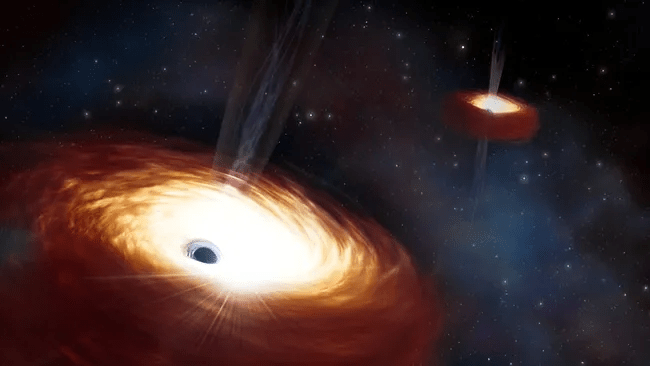The Cosmic Duel of Two Black Holes: A Galactic Mystery Unveiled
Written on
The Enigmatic Dance of Black Holes
Have you ever pondered the cosmic battles occurring in the vast, silent reaches of space? Imagine two enormous black holes, each weighing billions of times more than our Sun, locked in a gravitational waltz that has persisted for more than 3 billion years. Black holes serve as the universe's enigmatic recycling centers—regions where the gravitational force is so intense that even light cannot escape. Scientists have dedicated extensive research to uncovering their mysteries, and a recent finding has illuminated a pair unlike any other.
The Stellar Discovery
Nestled within a distant ‘fossil’ galaxy, known as B2 0402+379, astronomers have identified what is thought to be the heaviest black hole duo ever observed. These titans, engaged in an eternal struggle, have been revolving around each other for an incredible 3 billion years. Here are the remarkable aspects of this revelation:
- Impressive Mass: Collectively, they possess a mass equivalent to 28 billion Suns.
- Proximity: They are situated just 24 light-years apart, marking them as the closest black hole pair ever detected.
- Orbital Fate: Despite their closeness, they appear unlikely to merge anytime soon. Observations indicate that they are on an orbital trajectory rather than a collision course.
- Astrophysical Significance: This phenomenon is not merely a spectacle; it is a vital piece in the puzzle of galaxy formation and the influence of black holes within the cosmos.
Unraveling the Mystery
Astronomers utilized archival data from the Gemini North telescope in Hawaii, employing its GMOS spectrograph to separate light from stars into distinct wavelengths. This allowed them to identify light emitted by stars accelerating around the black holes.
Roger Romani, a physics professor at Stanford University, stated, “The superb sensitivity of GMOS enabled us to map the stars’ increasing velocities as one approaches the galaxy’s center. Consequently, we could deduce the total mass of the black holes present.”
This marks a groundbreaking moment in observational astronomy, as it is the first time scientists have witnessed two massive black holes that have postponed merging for an astonishing 3 billion years. Researchers believe that their immense mass has prevented any slowing down of their orbital dance.
Tirth Surti, a physics student at Stanford, notes that further investigation of the B2 0402+379 core, particularly concerning the amount of gas present, will shed light on whether these supermassive black holes might eventually merge or remain in their binary orbit.

Did You Know? — Fascinating Facts
- Cosmic Cannibals: When black holes collide, they can unleash energy equivalent to 100 million supernova explosions.
- Shadowy Silhouettes: While black holes do not emit light, we can detect their presence through the gravitational effects they exert on nearby stars and gas.
Engage with the Cosmos
What do you imagine occurs in the immediate surroundings of colliding black holes? Has this galactic discovery ignited a newfound fascination in the cosmos for you? Do you have a favorite celestial phenomenon? We invite you to share your cosmic curiosities in the comments below!
Don’t forget to share this post with fellow astronomy enthusiasts! Spread the knowledge.
Chapter 2: Exploring the Implications of Black Hole Dynamics
In this video titled "Astronomers Stunned: Two Monstrous Black Holes Locked in a Deadly Dance," explore the incredible findings about these extraordinary black holes and the implications of their long-lasting gravitational interaction.
The second video, "What Will Happen to the Universe if These Two Black Holes Collide?" delves into the potential outcomes of their eventual fate and what it means for our understanding of the universe.